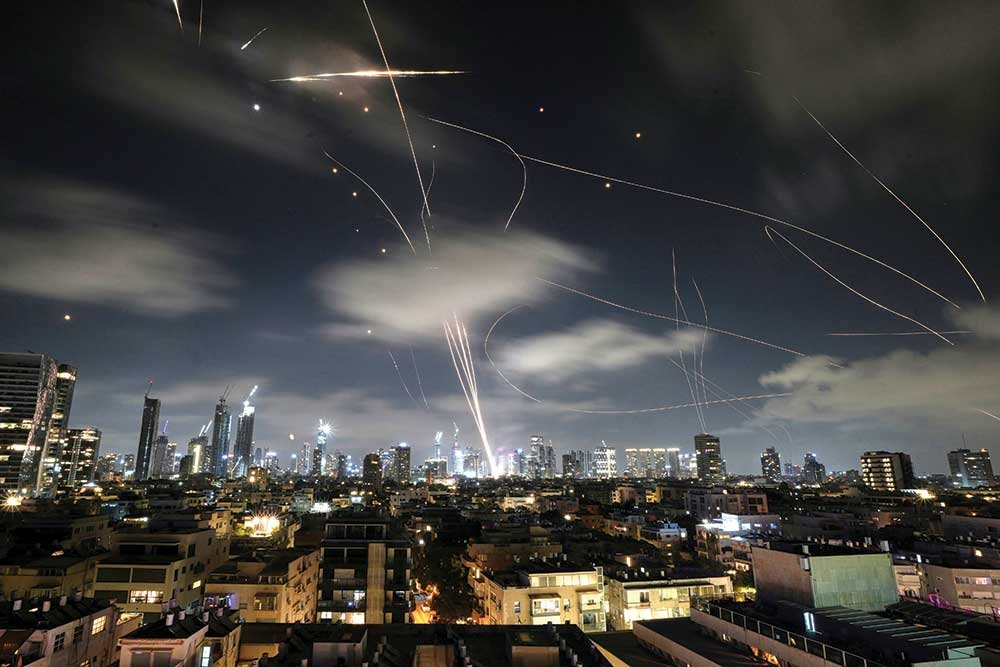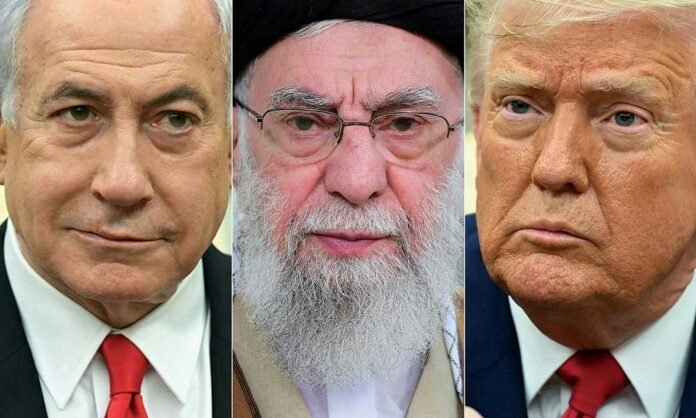The so-called ‘12-Day War’ between Iran and Israel stands as a seminal event compelling India to reconsider its place and purpose in the shifting architecture of West Asian geopolitics. For New Delhi, this was not a distant conflagration; it was a moment that illuminated both its vulnerabilities and its latent potential to shape the destiny of a region once considered peripheral to its core interests.
The stunning air attacks by Israel, followed by spectacular US strikes on Iranian nuclear sites, were extremely risky and destabilising. The reverberations of “Operation Midnight Hammer” will continue to be felt across the region which is dominated by regimes – monarchies, theocracies, and military strongmen – whose legitimacy is often fragile. The US and Israel assert that their bold actions have dealt a severe blow to Iran’s nuclear command capabilities, although some reports dispute these claims.
Yet, what remains beyond doubt is that a new phase in West Asian conflict has begun, marked by unprecedented unilateralism, shifting alliances, and the visible erosion of the rules-based international order.
The American strikes, in the later stages of the Iran-Israel conflict, served as a brutal reminder of Washington’s enduring military primacy in West Asia. Israel, for its part, viewed this not as alliance politics but as existential necessity – a reflection of the unrelenting logic that governs its security calculus.
Yet, even as Israeli jets punctured Iranian airspace with impunity, the outcome has not produced a decisive realignment of regional power. Iran, though degraded, remains defiant, with the IAEA warning it could resume uranium enrichment within months. Israel has certainly emerged militarily triumphant, yet seems diplomatically isolated. A political resolution remains elusive.
In contrast to Pakistan’s incoherent grandstanding – including the surreal nomination of President Donald Trump for the Nobel Peace Prize even as missiles rained down on Iran – India displayed maturity and restraint. This posture reflected a deeper evolution in New Delhi’s strategic culture, one that recognises the importance of ambiguity, timing, and non-linear power projection in a fractured geopolitical environment.
Yet, perhaps the most important lesson India must absorb is this: Strategic success in this volatile theatre demands a synthesis of hard power, intelligence precision, and diplomatic agility. Israel’s campaign, stretching from Gaza to Lebanon and culminating in Iran, was a case study in what may be termed as ‘strategic sanitisation.’ But the costs, both material and reputational, are mounting. And as this episode shows, no regional actor – not even Israel or Iran – can afford the luxury of unilateral escalation without incurring long-term blowback.
Amidst this storm, China has adopted a low-profile posture best described as diplomatic minimalism – a studied passivity masquerading as prudence. Despite deep economic entanglements with Iran through the Belt and Road Initiative (BRI), Beijing’s response was confined to ritualistic calls for de-escalation. This inertia revealed a central truth: infrastructure alone does not confer influence. In regions like West Asia, presence without credibility is a hollow asset. And yet, China’s caution is not without shrewd calculation.
Rather than relying upon the blunt instruments of military intervention, Beijing has chosen instead the subtler, more transactional levers of economic engagement. By purchasing a significant share of Iran’s oil and brokering the rapprochement between Tehran and Riyadh, China subtly clams to have provided Iran not merely with lifelines, but with the means to endure and adapt amid the battering winds of American sanctions.
The recent convulsions in the region have also opened new opportunities that are no less consequential. Iran’s antiquated air defence, starkly exposed by Israel’s technological superiority, has laid bare excruciating vulnerabilities. The acquisition by Pakistan of Chinese J-10C fighters and advanced air defence systems has not gone unnoticed in Iranian strategic circles. Should Iran reengage with China in arms procurement, Beijing would be direct beneficiary of a lucrative, low-risk entrée into a defence market hungry for renewal.
The so-called ‘12-Day War’ between Iran and Israel stands as a seminal event compelling India to reconsider its place and purpose in the shifting architecture of West Asian geopolitics. What remains beyond doubt is that a new phase in West Asian conflict has begun, marked by unprecedented unilateralism, shifting alliances, and the visible erosion of the rules-based international order
For India, these developments carry both warning and promise. The contest for influence in West Asia is no longer waged solely by force of arms, but by the patient accumulation of trust, commerce, and strategic foresight. In this theatre, India’s own tradition – rooted in non-alignment, pragmatic engagement, and the pursuit of stability – finds new relevance. Yet, the path ahead is defined by a clear choice: India can either follow China’s narrowly focussed, economics-only model, or it can chart its own course that prioritises integration of commercial interests with diplomatic responsibility and strategic depth.
Initiatives such as the Chabahar Port and the International North-South Transport Corridor exemplify this approach; they cannot be viewed as mere infrastructure projects, but must be underpinned by active diplomacy, sustained regional engagement, and, when necessary, credible security assurances. Only by embracing this holistic strategy can India truly realise its potential as a stabilising and influential force in West Asia.
India’s strategic calculus must internalise the centrality of the Strait of Hormuz. This narrow maritime passage is not merely a distant chokepoint; it is the lifeline of India’s energy security. Roughly 60% of India’s crude oil passes through it. Any conflict-induced disruption – be it Iranian retaliation or broader naval instability – could send shockwaves through India’s economy.

But energy security is only part of the picture. The millions-strong Indian diaspora in the Gulf constitutes a human bridge of vital significance, contributing almost 40% of the country’s remittances. Their safety and stability must be integrated into India’s national security architecture. These communities are not footnotes in India’s West Asia policy; they are its anchors.
In the wake of the ‘12-Day War’, India has an opening – perhaps a narrow one, but real nonetheless – to assert itself as a responsible, neutral actor in a fractured region. Unlike Washington, Beijing, or even Tel Aviv, New Delhi carries little historical baggage and enjoys working relationships with all the principal actors: Iran, Israel, the Gulf monarchies, and the West.
This rare positioning gives India the potential to be more than a balancer. India should proactively focus on sectoral agreements (energy, security, migration) and targeted bilateral frameworks, while fast-tracking implementation of the India-Middle East-Europe Economic Corridor (IMEC). Moreover, quiet backchannel diplomacy, rapid response capabilities, and real-time strategic communication must define New Delhi’s approach.
As the region teeters between further escalation and tentative diplomacy, New Delhi’s behind-the-scenes role could also prove decisive. It should leverage its strategic autonomy to facilitate dialogue between Washington and Tehran, advocating for a successor to the JCPOA that incorporates stringent safeguards while accommodating Iran’s legitimate economic aspirations.
With growing energy and economic interdependence with the Gulf, India is well-placed to reassure Riyadh and Abu Dhabi about the long-term non-militarisation of Iran’s nuclear program. In doing so, it could act as a ‘diplomatic bridge’ – helping to orchestrate a framework where sanctions relief is matched by verifiable nuclear restraint.
Amidst this storm, China has adopted a low-profile posture best described as diplomatic minimalism – a studied passivity masquerading as prudence. Despite deep economic entanglements with Iran through the Belt and Road Initiative (BRI), Beijing’s response was confined to ritualistic calls for de-escalation
Two forward-looking initiatives could help cement this role:
- Chabahar as Commons: By internationalising the Chabahar Port – invitation to other regional and global stakeholders such as some Central Asian nations and European partners to participate in governance and operations – New Delhi can reposition it from a strategic foothold into a neutral, multinational hub. This could help dilute Chinese influence while offering an alternative to Pakistan’s obstructionism, positioning India as a stabilising force in a volatile geography.
- West Asia Crisis Diplomacy Taskforce: India must seriously think of setting up a dedicated, multi-agency unit – with representatives from the Ministry of External Affairs, Ministry of Home Affairs, Ministry of Defence, intelligence agencies, and the National Disaster Management Authority – for real-time crisis management, diplomatic outreach, and evacuation logistics. Such a taskforce would ensure India is proactive when the next flashpoint emerges.
India’s expanding role – bridging the Arabian Gulf, Indian Ocean, and Southeast Asia – is no longer a matter of choice but of strategic necessity. The Iran-Israel war underscored the fragility of energy corridors, the importance of diaspora resilience, and the unpredictability of regional escalations. As great power contests play out over Iranian skies and maritime lanes, West Asia awaits the intervention of smart diplomacy to shape a more stable order. Hence, India cannot stand on the sidelines. It must be the quiet, yet an influential strategist.













